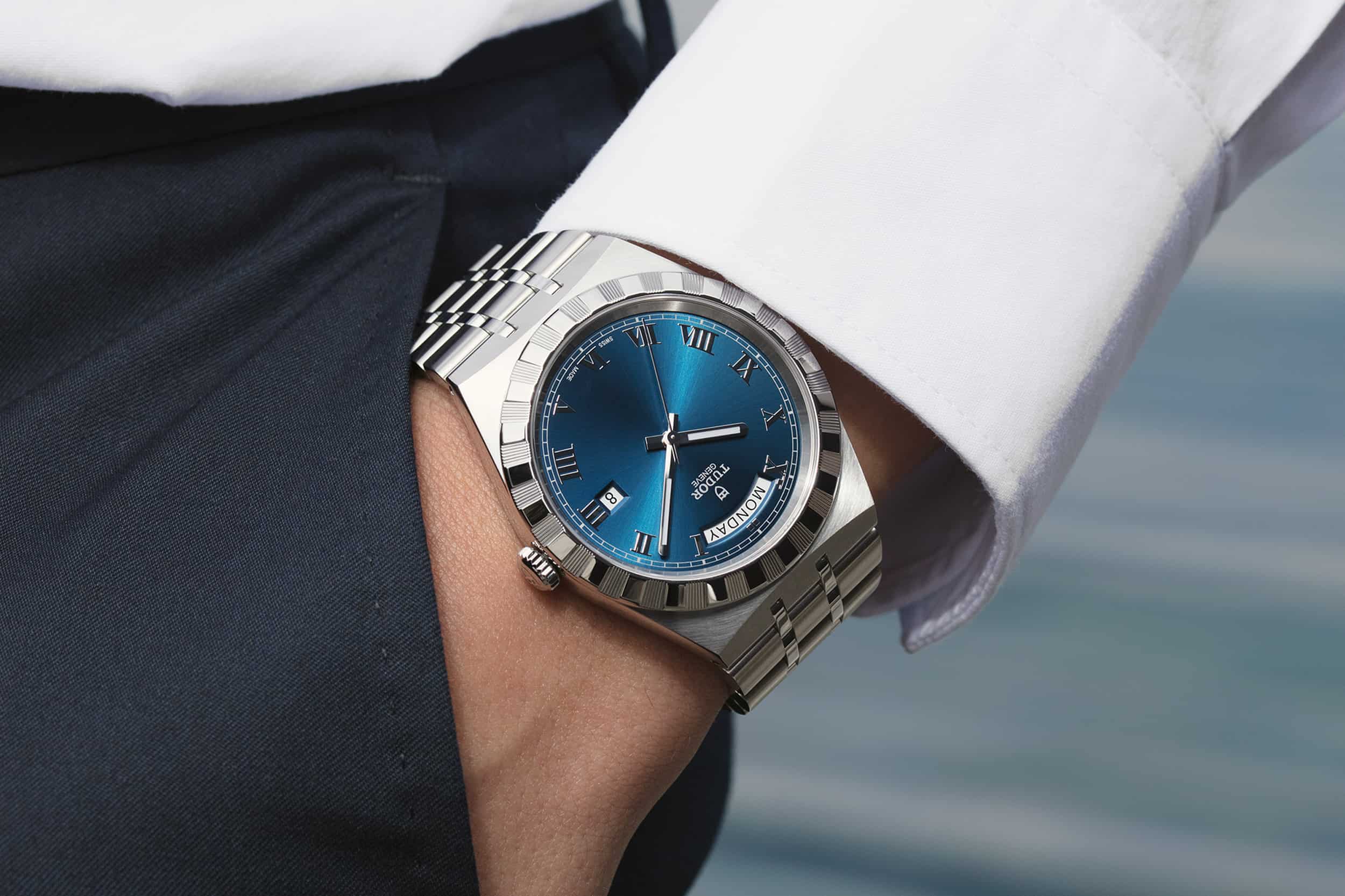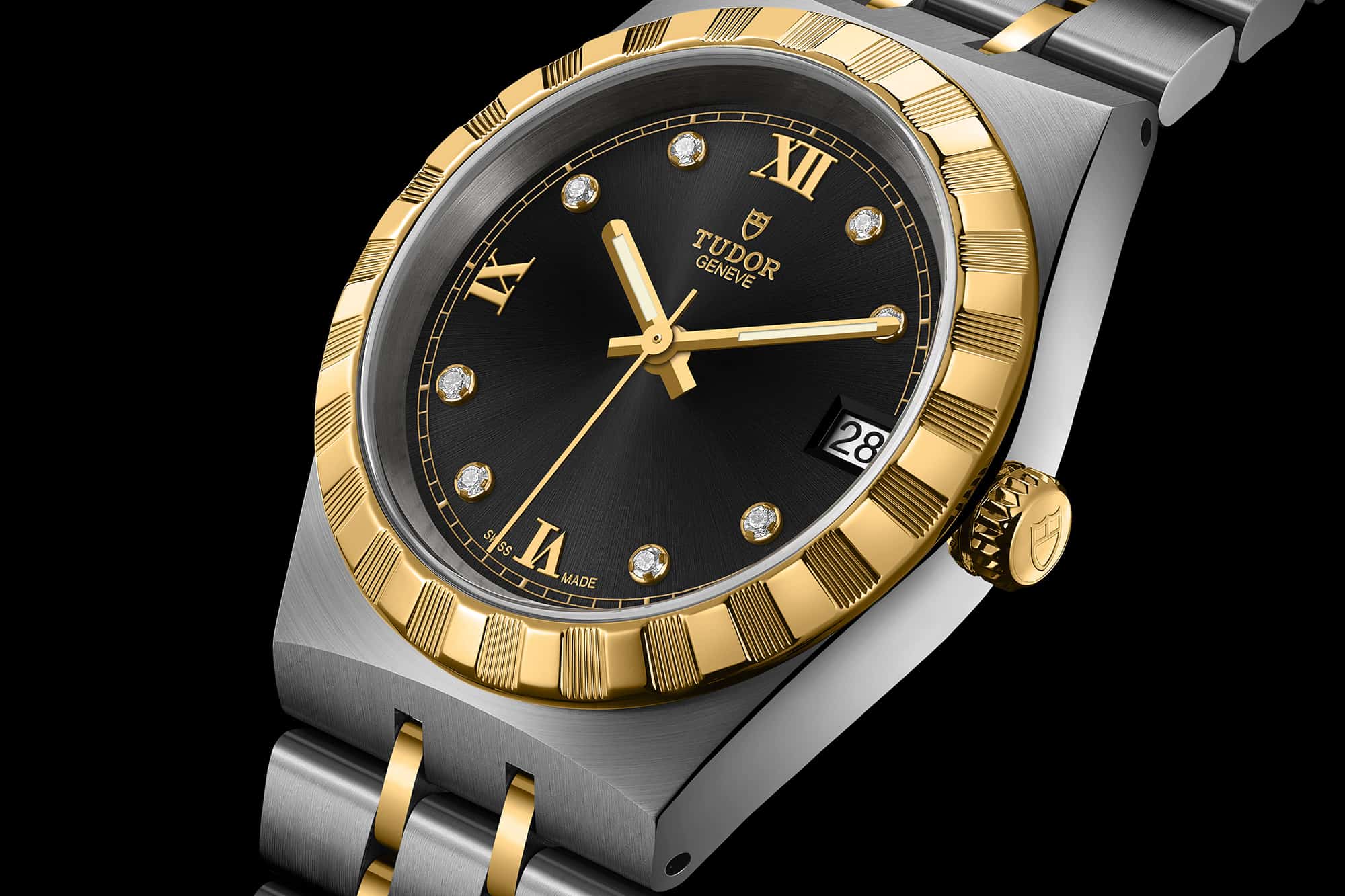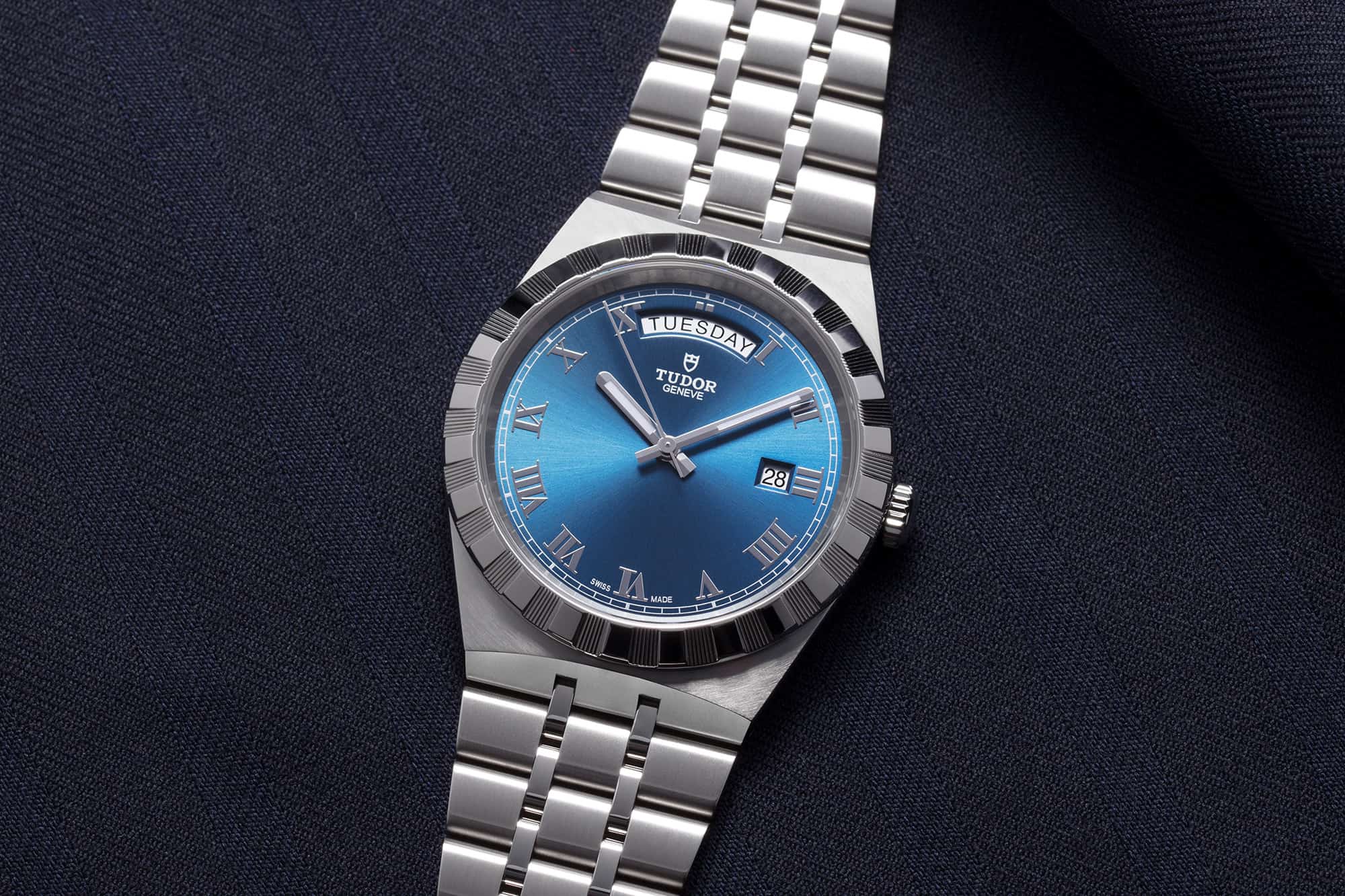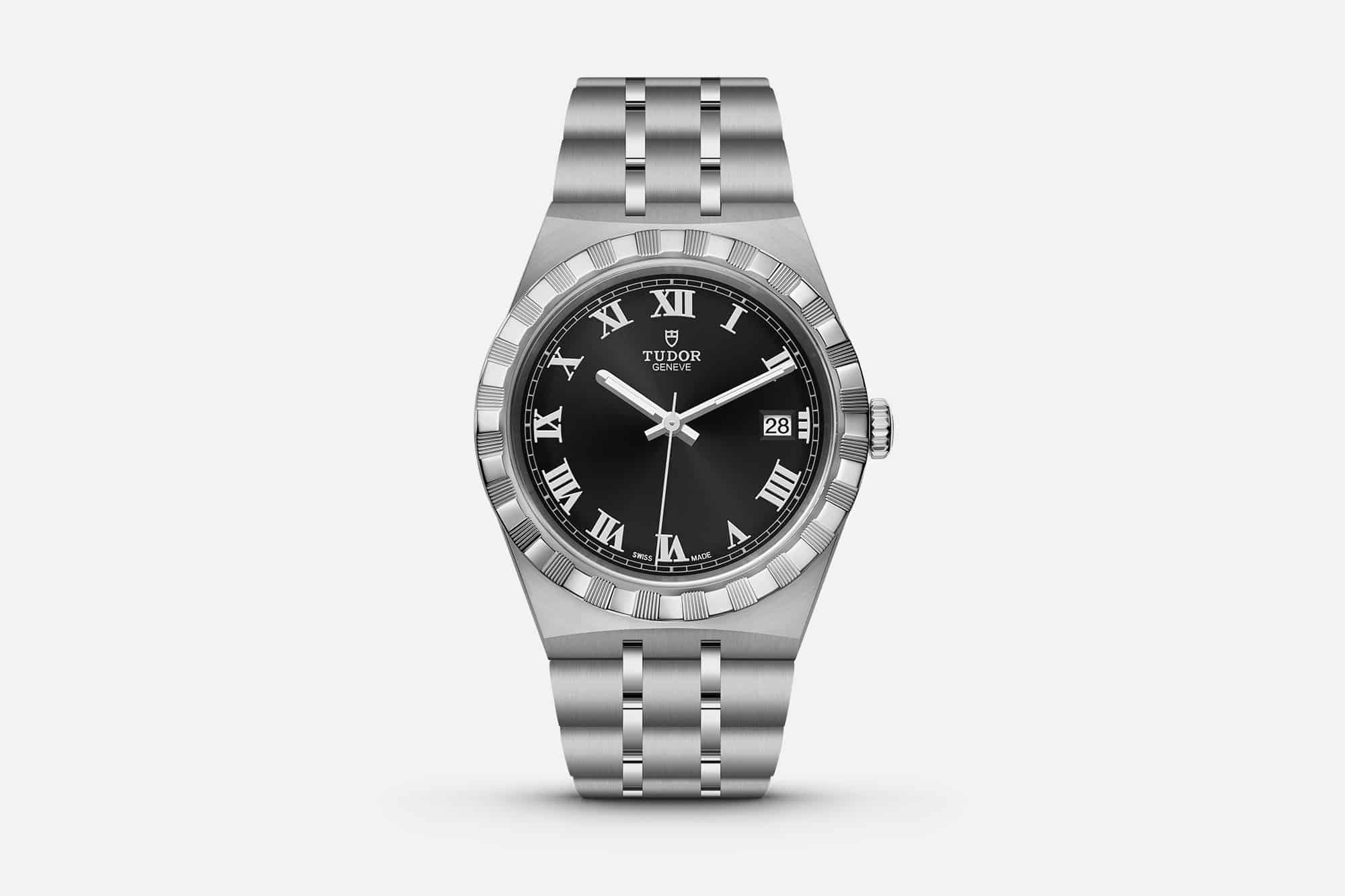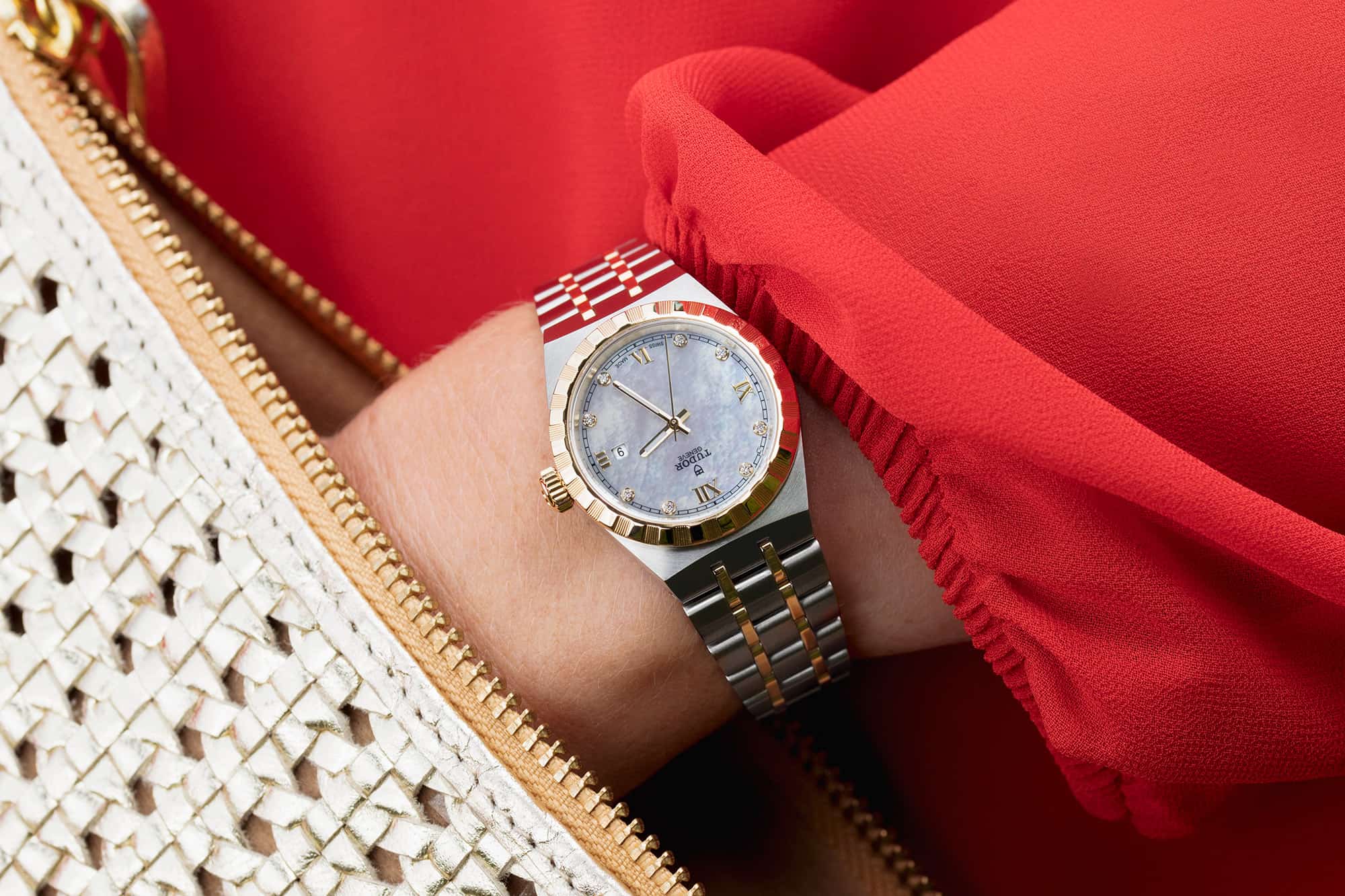Tudor is a brand with a ton of history and a huge variety of watches in their back catalogue, but you could make an argument that since their return to the United States market about a decade ago, they’ve been living off of one collection: the Black Bay. The heritage inspired dive watch has spawned a range of watches that could almost be considered a brand unto itself – a GMT, chronographs, multiple colorways, and of course the Fifty-Eight, perhaps the platonic ideal of a vintage inspired diver. Today, then, is something of an event, because Tudor is reaching back into their history and bringing back the Royal, a product line that has its roots in the 1950s. The result is a sporty watch in several flavors that picks up on a few key trends of the moment, and represents real value for watch buyers looking for something pretty specific. Let’s take a look.
Introducing The Tudor Royal, Proof The ‘90s Are Back
While the Royal branding has roots in the 50s, this new line has styling that’s pure 90s. Though the integrated bracelet design is obviously on point in 2020, the Roman numerals, thick bracelet links, and Thunderbird style bezel feel like a callback to the Clinton years, as do the optional diamond indices and mother-of-pearl dial variants. There’s also a major 70s sports watch vibe happening here, which is somewhat inescapable for any watch with an integrated bracelet. The Royal is something of a mix, then, between sporty case and bracelet combos from the disco era, and 90s flash, with gem set dials, high polish, and a distinct visual language that is anything but subtle.
And speaking of options, well, if you want them, Tudor’s got them. The Royal is available in 28, 34, 38 and 41mm case sizes, in both stainless steel and two-tone options. Dial choices range from the aforementioned mother-of-pearl in smaller ladies sizes, plus sunray, satin finished dials in black, silver, champagne, and blue. It’s the blue variant at 41mm with a day-date complication that is the clear standout from the pack, referencing, simultaneously, the Rolex Day-Date and Oysterquartz references from the Crown, which of course is a parent company of Tudor. In all, a total of 9 dial options across the 4 case sizes will be available.
Tudor’s stated goal here is to create a “sport-chic” line, and I definitely think that they lean heavily on the chic here in a very 90s way, that will be a love-it or hate-it proposition for many. The case and five-link bracelet format here is certainly robust in appearance, and we can expect that with 100 meters of water resistance (and screw down crown, and sapphire crystal) along with Tudor’s reputation for quality products and workmanship that the watch will be able to stand up to the daily grind. But the dial options are uniformly on the elegant side, miles away from the tool watch territory that many associate with the brand as it exists today.
A major draw of this collection, and something that is worth examining closely, is the price point. These watches range from $2,150 – $3,975, which, for a new watch from a high profile brand like Tudor, seems like a bargain. Tudor gets to this price point through the use of ETA supplied movements, forgoing their in-house offerings that are now found throughout their high profile Black Bay and Pelagos lines. Like the style of the watch itself, this is surely to be a hotly debated topic. Using an off the shelf movement, though, is part of Tudor’s history as a brand, and has always been a way that they’ve added value to their products, and this feels no different. The top of the line Day-Date Royal makes a lot more sense, and is a lot more compelling, at $3,350 than it would be at a price point that’s potentially $1,000 or more higher with an in-house movement. And it could be argued that for a watch that is ultimately an exercise in style and perhaps a bit risky, an ETA movement and lower price point simply makes more sense.
The new Tudor Royal family is available now from Tudor. Check out the whole lineup via Tudor’s website right here.









 Featured Videos
Featured Videos




